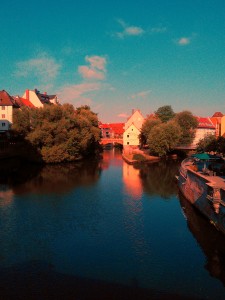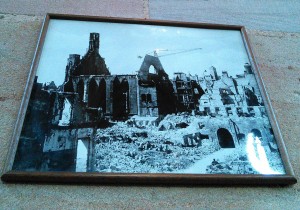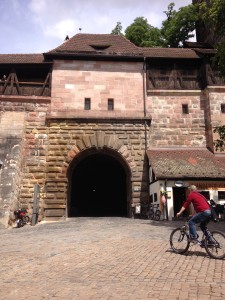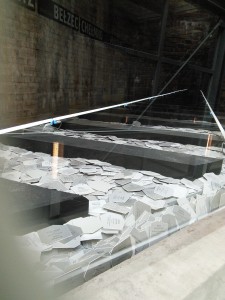Guten Tag Sweet Friends!
 We spent the last three days in Nuremberg Germany, and I have to say I fell in love with the city and its charms. Nuremberg has a glorious and horrific past from its designation as the Imperial City of the Roman Empire to its designation as the “most German city” and home of the Nazi Party and rally grounds. It was in Nuremberg that Nazi racial laws were announced and plans were drawn and models built for the final solution. And Nuremberg is where the world watched as 24 Nazi war criminals were tried for their part in the Holocaust and its atrocities. It has a checkered past to say the least, but the people embrace their history and today take a proud stand for human rights on many fronts. They do not run from their past but learn from it.
We spent the last three days in Nuremberg Germany, and I have to say I fell in love with the city and its charms. Nuremberg has a glorious and horrific past from its designation as the Imperial City of the Roman Empire to its designation as the “most German city” and home of the Nazi Party and rally grounds. It was in Nuremberg that Nazi racial laws were announced and plans were drawn and models built for the final solution. And Nuremberg is where the world watched as 24 Nazi war criminals were tried for their part in the Holocaust and its atrocities. It has a checkered past to say the least, but the people embrace their history and today take a proud stand for human rights on many fronts. They do not run from their past but learn from it.
Since Nuremberg was the rally ground for the Nazi party, it was targeted by US forces and bombed  heavily at the end of WWII. Almost 90% of the city was destroyed by the bombs. Old black and white pictures throughout the city’s museums and sites show the destruction and you have to wonder how the city could look as lovely, tranquil and “old” as it does now. The city architects took great pains to restore as much of the city as possible to its original medieval look and feel. Parts of the city wall and castle remained as did the façade of several churches and other sacred places but the interiors had to be completely rebuilt. The city stored much of its treasures and antiquities in underground bunkers in order to preserve them and the city’s heritage. Many of the objects that are now on display in the castle museum were stored there as was the mechanics of the Glockenspiel along with hundreds of paintings and sculptures from the cathedrals. Paintings, etchings and wood cuts by Albrecht Durer, Nuremberg’s most famous and acclaimed artist, were hidden in the bunker and saved. The city has been remarkably restored and it looks, well, old when it’s really not. Most of the city was rebuilt after the war and many of the finishing touches were done in the 80’s. But to walk along the river and see the old mills, the old river bridges, the split rail homes along cobblestone streets, you would think it was preserved from the 1500’s!
heavily at the end of WWII. Almost 90% of the city was destroyed by the bombs. Old black and white pictures throughout the city’s museums and sites show the destruction and you have to wonder how the city could look as lovely, tranquil and “old” as it does now. The city architects took great pains to restore as much of the city as possible to its original medieval look and feel. Parts of the city wall and castle remained as did the façade of several churches and other sacred places but the interiors had to be completely rebuilt. The city stored much of its treasures and antiquities in underground bunkers in order to preserve them and the city’s heritage. Many of the objects that are now on display in the castle museum were stored there as was the mechanics of the Glockenspiel along with hundreds of paintings and sculptures from the cathedrals. Paintings, etchings and wood cuts by Albrecht Durer, Nuremberg’s most famous and acclaimed artist, were hidden in the bunker and saved. The city has been remarkably restored and it looks, well, old when it’s really not. Most of the city was rebuilt after the war and many of the finishing touches were done in the 80’s. But to walk along the river and see the old mills, the old river bridges, the split rail homes along cobblestone streets, you would think it was preserved from the 1500’s!
 The city was proclaimed the Imperial City by the Roman Empire in the 1st century. Building of the Imperial Castle began in 1050 and continued for centuries. The site was used primarily to host emperors and their courts as they “passed through” or upon their coronation or for various other ceremonies. The double imperial chapel is one of the oldest parts of the castle that is still standing (c. 1200). Today the castle is a museum and can be used for weddings and other events. Rooms have been partially restored to their former glory and the outside courtyard is lovely with its ivy covered walls and flower gardens.
The city was proclaimed the Imperial City by the Roman Empire in the 1st century. Building of the Imperial Castle began in 1050 and continued for centuries. The site was used primarily to host emperors and their courts as they “passed through” or upon their coronation or for various other ceremonies. The double imperial chapel is one of the oldest parts of the castle that is still standing (c. 1200). Today the castle is a museum and can be used for weddings and other events. Rooms have been partially restored to their former glory and the outside courtyard is lovely with its ivy covered walls and flower gardens.
Because of Nuremberg’s location and its “imperial” past, Hitler selected it as the Nazi party rally grounds. Hitler engaged Albert Speer to design a huge complex outside the city center for the party rallies as well as housing for troops, green space for festivities and parade grounds. The Nazi’s were big on parading around for Hitler so space was needed! Although never fully completed, the coliseum-like Kongreshall still stands is now a museum about the party’s rise and fall as well as a memorial to the victims of the Holocaust. We spent almost five hours there! Armed with an audio guide, we wandered through each room watching actual footage, viewing the many photos and documents and reviewing the history of each one. It is a remarkable exhibit and so thoroughly engaging that we lost track of time!
Next, we grabbed lunch in the market square and headed to the Nuremberg trial museum. Again, armed with our audio guide, we began where the Documentation Center left off, with the arrest of 24 Nazi party war criminals and their subsequent trial. The war ended in April 1945 and the trial began in late October of 1945. They moved swiftly to repair the courtrooms that had been bombed during the war, confiscate the thousands of records that the Germans kept that documented their crimes. The Nazi’s were kept in small prison rooms beneath the courthouse while they waited trial. It was important to the US that the trial be held in US-occupied Germany and that the trials were governed by US law and trial procedures, so they moved swiftly to eliminate any possible argument or delay. The trials lasted almost a full year, ending September 30, 1946. The verdicts were announced in October. Only three of the 24 were acquitted and those three went on to be judged in German courts and sentenced to labor camps. The trials set the standard for world judgment and governing international law going forward. It is an amazing and sobering exhibit.
We were unable to see the underground bunkers and catacombs so I definitely want to go back to see these and the other treasures of the city that we missed. The city also offers many vegan and vegetarian options! We ate at The Tasty Leaf, a totally vegan restaurant that is off the beaten path. We also found a little alley with a small café that offered vegan and gluten free Italian food. We had gluten free pasta and a huge salad with grilled veggies, and just down the street we found vegan gelato!! Like I said, Nuremberg is a mixture of old and new, biergartens to vegetarish alleys, and fish brots to vegan gelato!!! I loved the mix and very much want to go back during Christmas when the city is said to be once again imperial!
Enjoy all the pix from our trip by clicking on the Photos link above. Mix it up today baby and enjoy your day!

